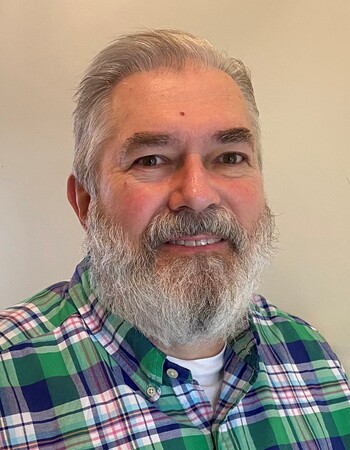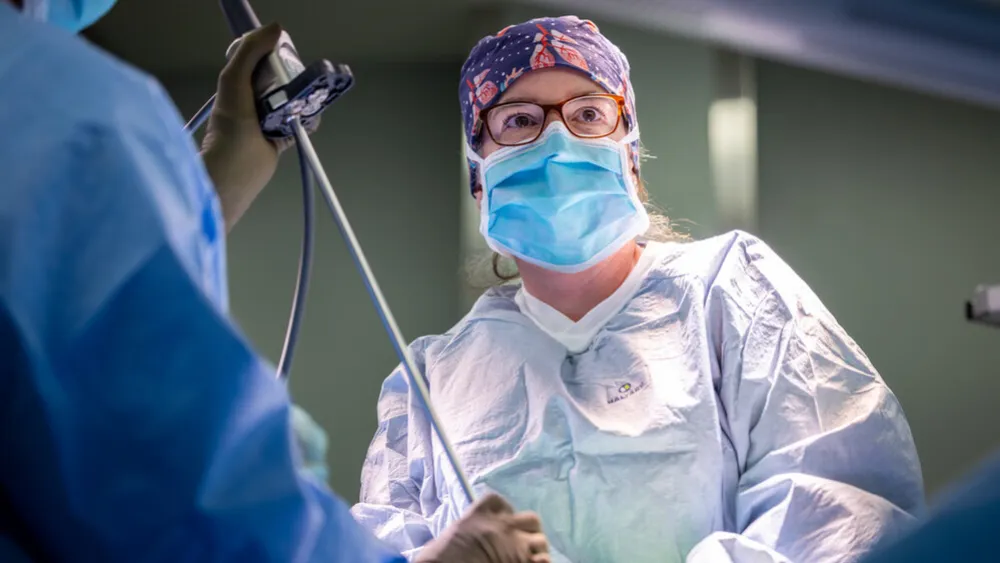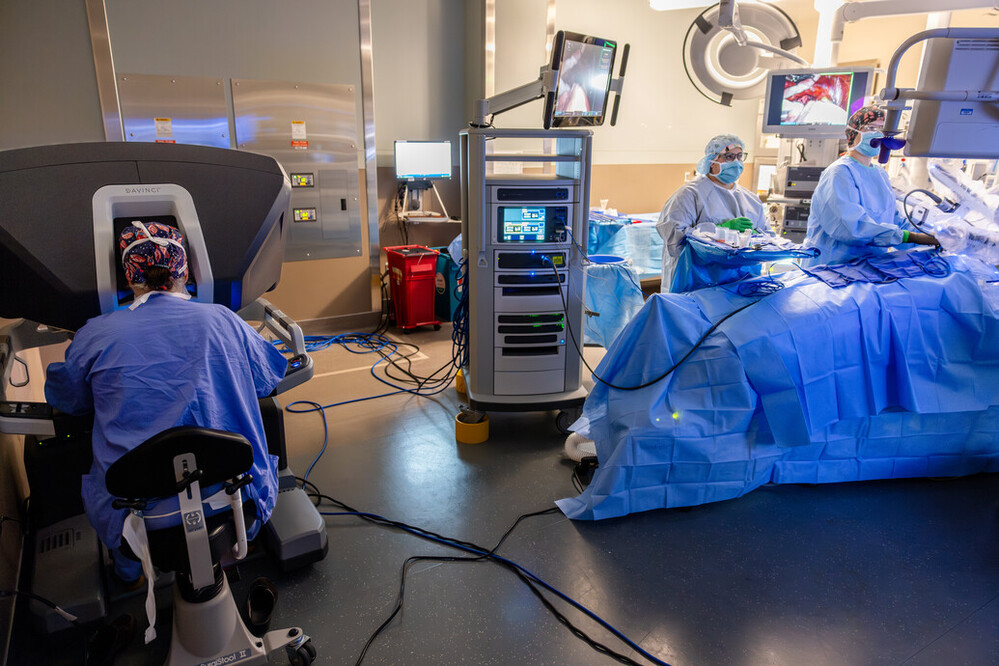





Today's Medicine
Thoracic surgeon expands the reach of robotic surgery at Methodist
Published: April 11, 2024


Steve West’s path to receiving a life-changing robotic surgery started with an unusual cough.
As West cared for his terminally ill wife in 2020, he developed his own health issues. Near the end of his wife’s hospice care that fall, he felt a tightness in his chest and began coughing up blood.
“At first, I was coughing and didn’t know it was a specific spot, just something in my right lung,” he said. “But as it progressed, it got more and more specific. When I would cough, it felt like there was something there I couldn’t cough up. It felt like something was blocking the airway.”
West lived with his symptoms for years, but things came to a head last summer after he chased his son’s loose dog.
“I was huffing and puffing, and I coughed up a cupful of blood and phlegm. That was my wake-up call.”

‘Leaders in robotic surgery’
West made an appointment with Methodist Physicians Clinic pulmonologist Rosina Schiff, DO, who ordered a CT scan and saw a blockage. A subsequent bronchoscopy – a procedure that guides a small tube and camera through the airway – revealed a tumor about the size of a marble. Dr. Schiff referred West to Methodist cardiothoracic surgeon Karin Trujillo, MD, who’s trained in robotic-assisted surgery – a specialty that has seen significant growth at Methodist Hospital in the past two decades.
Robotic approaches allow surgeons more precision while operating less invasively. Meanwhile, patients generally experience less time under anesthesia, less pain, shorter hospital stays and faster recoveries.
“We are leaders in robotic surgery,” Dr. Trujillo said.
Dr. Trujillo is at ease using robotic surgery for common procedures like the removal of lung lobes and lymph nodes, but West’s case presented a new challenge. Dr. Trujillo sees only a handful of patients each year with a tumor like his, obstructing the airway and not involving his lungs. Traditionally, the solution is an open surgery involving an incision between the ribs.
But given her experience with robotics, Dr. Trujillo proposed taking the minimally invasive approach for West’s tumor. In the event that the surgery couldn’t be completed, she could still resort to the traditional approach.
“A bigger cut means they’ve got to detach muscles, work around arteries, veins and other structures in your body,” West said. “Dr. Trujillo said, ‘I think if we do this robotically, it would be the best outcome.’ She was very good at explaining the surgery, and I felt confident.”

'Impressive technology'
In early November, Dr. Trujillo performed what’s believed to be the region’s first robotic-assisted thoracoscopy with bronchial sleeve resection at Methodist Hospital. During the four-hour procedure, she used a Da Vinci surgical robot to remove the section of West’s airway that included the tumor, then hand-delivered a specimen for examination to the Methodist Pathology Center-Schenken Pavilion on the hospital’s campus.
After lab testing confirmed she had removed the entire tumor, she sutured the airway back together with robotic assistance. During the procedure, she also removed surrounding lymph nodes in case the tumor proved cancerous and had spread. Subsequent tests determined the tumor was a nonaggressive lung cancer, but it hadn’t spread. The immediate danger – now resolved – was that it was obstructing West’s airway.
West said he’d been concerned about pain heading into the surgery, but he was pleasantly surprised by his experience. His pain was minimal, thanks to smaller incisions and an intercostal nerve block – a nerve injection that limits pain in the chest and upper abdomen. Most of the pain he did experience stemmed from a tube draining fluids from his chest. The tube was removed within a couple of days, and three days after the procedure, West was home again – with a new outlook.
“My recovery has been pretty quick,” said West, who followed up with pulmonary rehabilitation at Methodist Hospital. “I can breathe clearly now and not feel that constant urge to cough all the time. I’m hopeful that will result in me being more active.”
For Dr. Trujillo, West’s outcome is equally satisfying.
“It’s really nice to see that we're able to almost fully transition to minimally invasive surgery and still have really excellent outcomes for patients, not only from a cancer perspective, but also from a pain and recovery perspective,” she said. “It’s really impressive technology that helps you get your patient back to their life as quickly as possible.”
Photos by Daniel Johnson and Nick Bohan
More Resources
- Read more from the spring/summer 2024 issue of The Meaning of Care Magazine.
- Read more about Methodist's use of robotic surgery across specialties.
- Learn more about surgical services across Methodist.
- Learn more about lung and pulmonary medicine at Methodist.


